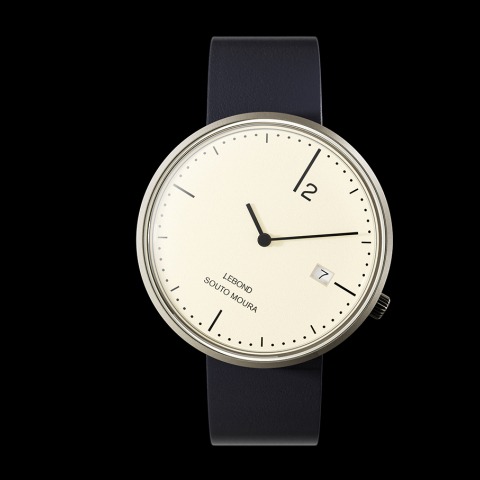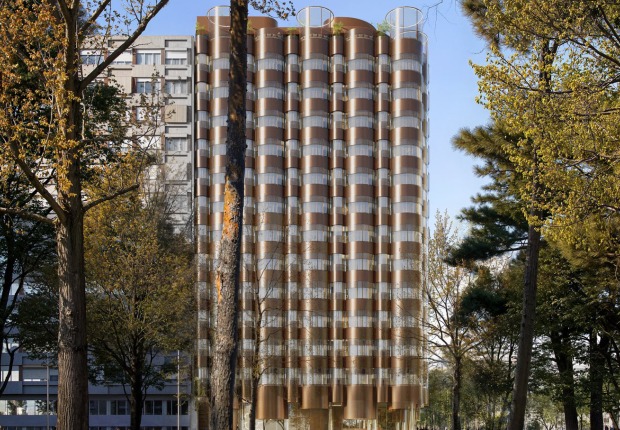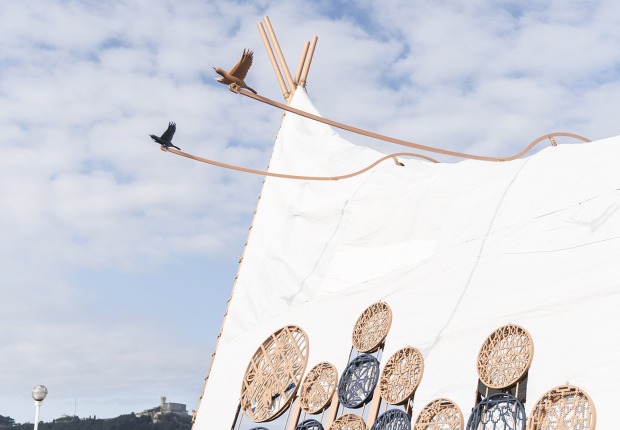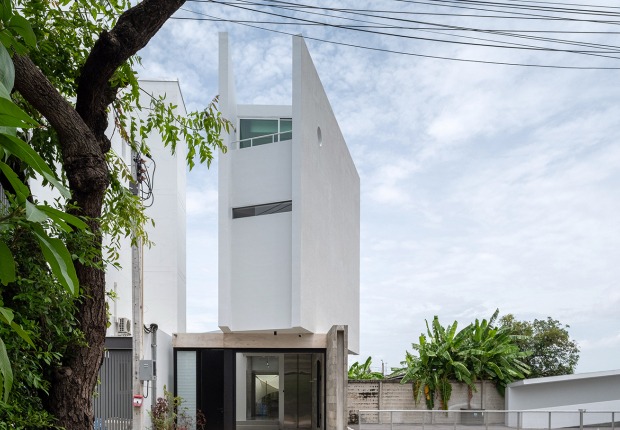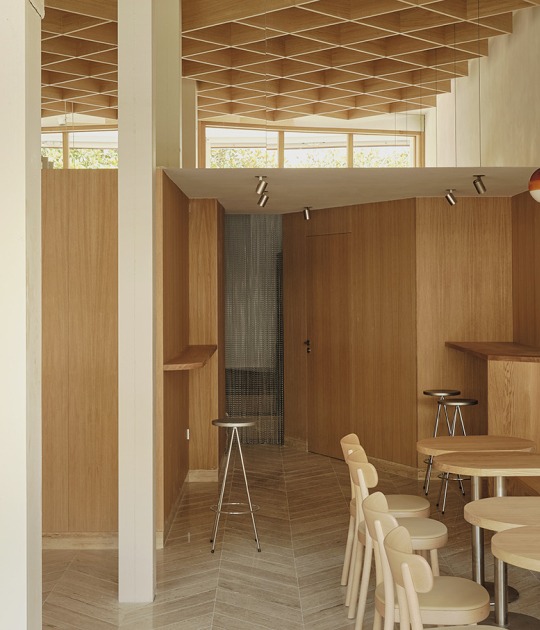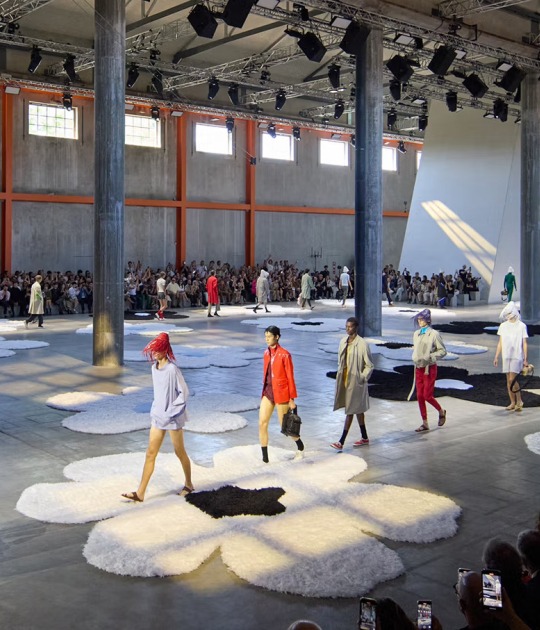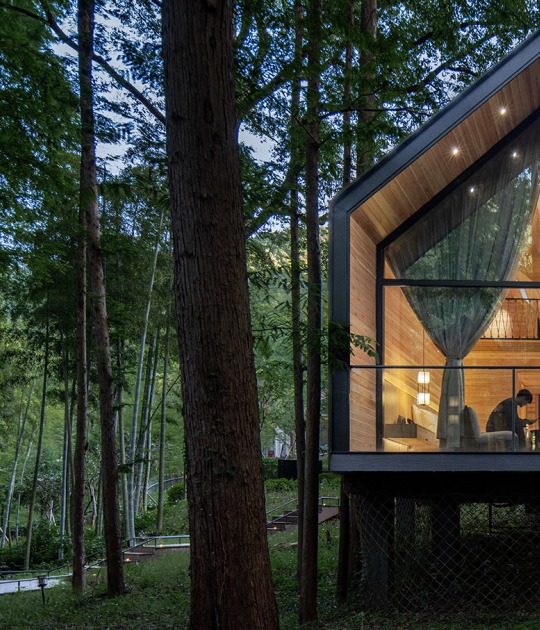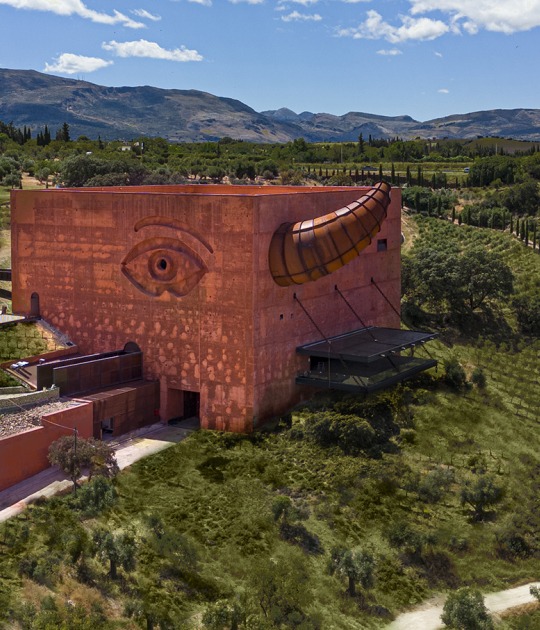Eager to give a new spin on familiar things, Souto de Moura drew a round watch and turned the dial, movement, and crown 30 degrees clockwise. The result is an architect's take on a driver's watch. While the shape is familiar, the literal twist in the design plays with the mind and changes your perception not only of the watch but also of the way you experience time itself. Always in favor of clean lines, Souto de Moura kept the dial as pure as possible.
Stick hands offer a bold contrast against the color of the dial, clearly indicating the exact time. As 12 is the reference, Souto Moura mixed an Arabic numeral with a bold hour marker, automatically grabbing your eye's attention and guiding you through the familiar act of telling time, even forgetting that you are doing so at a 30-degree different angle. Matching markers at the three, six, and nine o'clock positions bring symmetry, aided by the more modest dashes indicating the remaining hours and the dots in between them telling the minutes.

"I want the watch to be and feel as slim as possible."
Completely aware that his creations have an actual purpose beyond being beautiful, the Lebond Souto Moura is fitted with a date function. This allows the watch to be an even more intricate part of its owner's day and offers another way to interact with the timepiece. In order to fulfill Souto de Moura's desire to make the watch as slim as possible, a 38.5mm large case was crafted from grade 5 titanium. With the strap attached underneath it, the case thickness is a mere 7.6mm, and the total weight of the watch is only 46grams. The timepiece includes a domed sapphire crystal with an anti-reflective coating, allowing a clear view of the dial. The micro-sandblasted finish of the case is protected by an anti-fingerprint coating, ensuring that it continues to look pristine for longer.
The ticking heart of the Lebond Souto Moura is an ETA 2892-A2. This automatic, Swiss-made caliber runs at 28,800 VpH/4Hz and offers a generous power reserve of 50 hours. It is decorated with blued screws, Geneva stripes, and circular graining. The movement can be admired through a sapphire insert in the titanium grade 5 caseback, which is adorned with Eduardo Souto de Moura's autograph. Each of the Lebond Souto Mouras is individually numbered.

"I arrived at the office feeling bored, but when I saw the latest pictures of the watch, I became excited."
Being involved every step of the way, Souto de Moura made this Lebond his own, adding another exciting chapter to his impressive career. The watch is available in two different versions, both of which share the same 38.5mm-diameter titanium grade 5 case and ETA 2892-A2 movement. The 'Original Edition' showcases a matte beige dial paired with a navy blue Top Nappa leather strap.
The 'Dark Edition' presents a matte grey dial complemented by a matching black Top Nappa leather strap. As wearing comfort matters as much to architects like Souto de Moura as it does to Lebond, this timepiece is also fitted with a custom deployment clasp. Made from titanium grade 5 as well, this clasp secures the watch safely and comfortably around your wrist in a style matching the watch itself.
The price of both the Original and Dark editions is 2,700 euros (excluding taxes).
